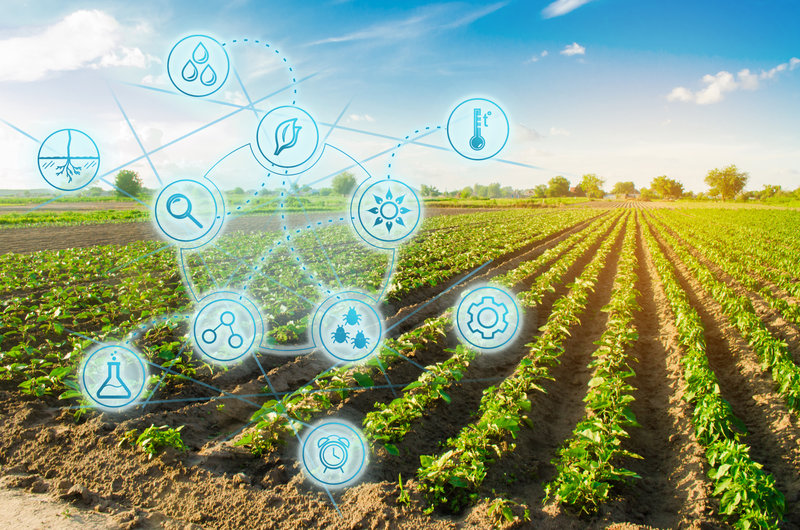Food for Thought: Pandemic Presents Automation Opportunities for Agribusiness
There’s nothing normal about 2020. The coronavirus disruption is an overwhelming force affecting demand trends, logistics, labour resources, and spending power for the world’s food, beverage, feed, and fiber producers. However, without discounting the struggles, the pandemic does presents opportunities for agribusinesses to plow through this crisis and sow the seeds for success in what could be the new normal. Essentially, the pandemic provides a hyper-focus on the need for agribusinesses to leverage technology to control costs, boost efficiencies, increase productivity, and better plan for the future.
Cultivating Insights
Newer technologies, including robotics, artificial intelligence (AI), and Internet of Things (IoT), are driving fundamental shifts in the evolving agribusiness value chain, from operational excellence and supply chain orchestration to transparency. The key to maximizing the value of technology lies in the ability to draw actionable insights from the data the technology collects.
What can actionable insights do for agribusinesses? It could, for example, mean awareness into which seeds, fields, or feed are generating the best results, who are the best-performing suppliers and customers, and what the true costs of production are. It could mean not just being able to see a business’s real-time market share but to have an understanding as to why the market share is that amount. It could mean having both the historical and real-time data needed to make strategic operating decisions even during uncertain times.
Growing Margins
The pandemic has dealt unprecedented shocks to both supply and demand, impacting the entire supply chain. To remain profitable, agribusinesses must be able to accommodate — or even anticipate — future demand for their products. And while global demand for food is expected to double by 2050, there is extreme variability in the makeup of that demand during the pandemic. Farms throughout the world need to strategically scale production to accommodate this fluctuating demand while sustaining, or even growing their margins. Scaling production goes hand-in-hand with simplifying and automating the production process, thereby reducing waste and increasing efficiency while simultaneously freeing resources for growth.
Propagating quality
With a heightened focus on our food supply, consumers and regulators are calling for higher quality standards and better seed-to-fork and farm-to-sale traceability. Finding reliable, efficient ways to ensure quality and traceability is essential for every farming and food manufacturing operation. Now is the time to focus on streamlining quality management and reporting, to ensure support for changing regulatory compliance and certifications.
Weeding through costs
Product cost can be used for investment justification, sourcing materials and services, new product introductions, market strategy, engineering process changes and planning product changes. Full costs and variable costs are also used to evaluate the profitability of a product, determine the optimal production process and make accurate pricing decisions. Yet, despite its importance, it’s notoriously difficult for agribusiness to obtain accurate production costing. Typically costing data is kept in multiple systems, with little or no integration between. To accurately gather and scrutinize production costs agribusinesses must be able to maintain complete costing data in one single technology application with sufficient analysis and reporting tools.
Nurturing the workforce
The lockdown and absenteeism of sick workers immediately impacted labor availability for growers and manufacturers. The 2020 Agribusiness Global State of the Industry reports that 45% of companies say their labor was affected by ongoing disruptions and will likely continue to operate in some form of reduced capacity to comply with physical distancing requirements. A proven way to mitigate labor disruptions going forward is to invest further in automation and remote work capabilities. The same report found that nearly one-third of respondents will invest more in automation to help mitigate labor disruptions going forward, and another 28% are looking into how automation can help their business in the future.
Harvesting results
Successful agribusinesses leverage financial and operational management technologies that make food systems more efficient, sustainable, productive and profitable. One of those technologies is the combination of Caron Business Solutions and Sage X3. The duo provides a comprehensive solution for the agri-food industry to manage business specific processes.
Overall, the solution gives users total control over their companies, increasing their competitiveness and allowing them to plan for tomorrow and beyond.
We invite you to learn more about Caron’s Agribusiness solution. Contact:
North America – Paul Caron, CEO
South America – Luis Palmer, Peru Country Manager




